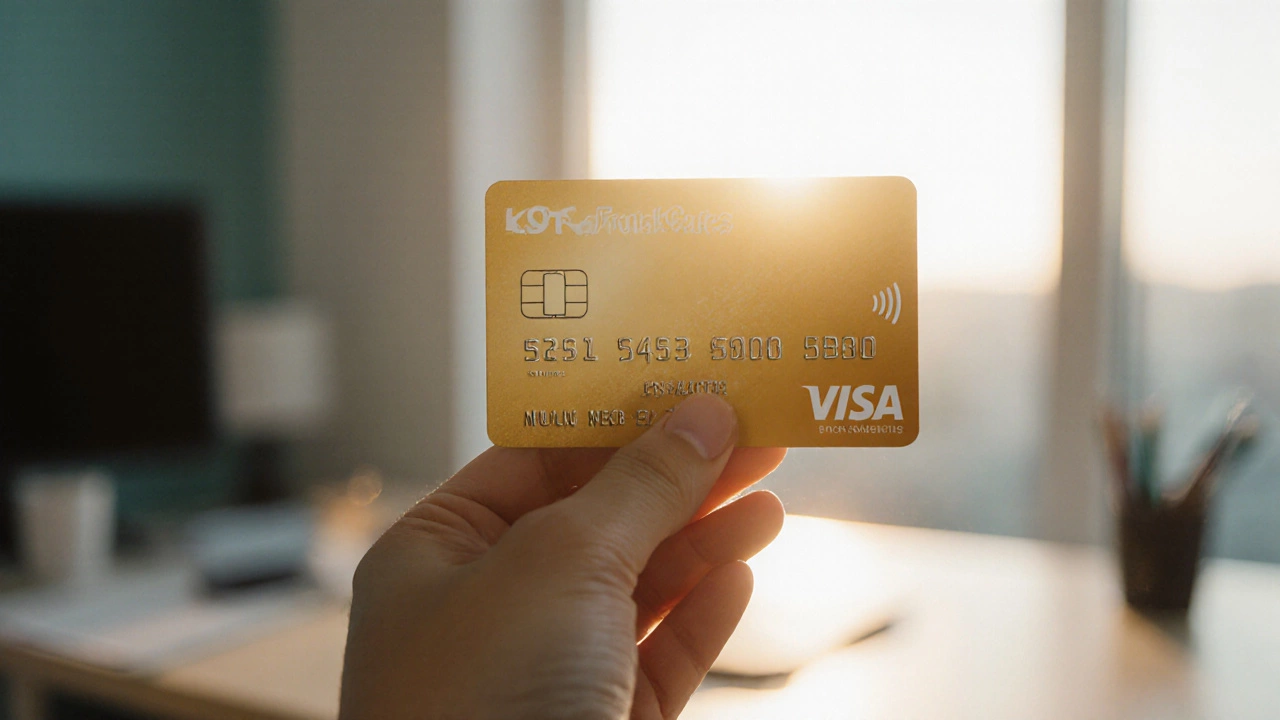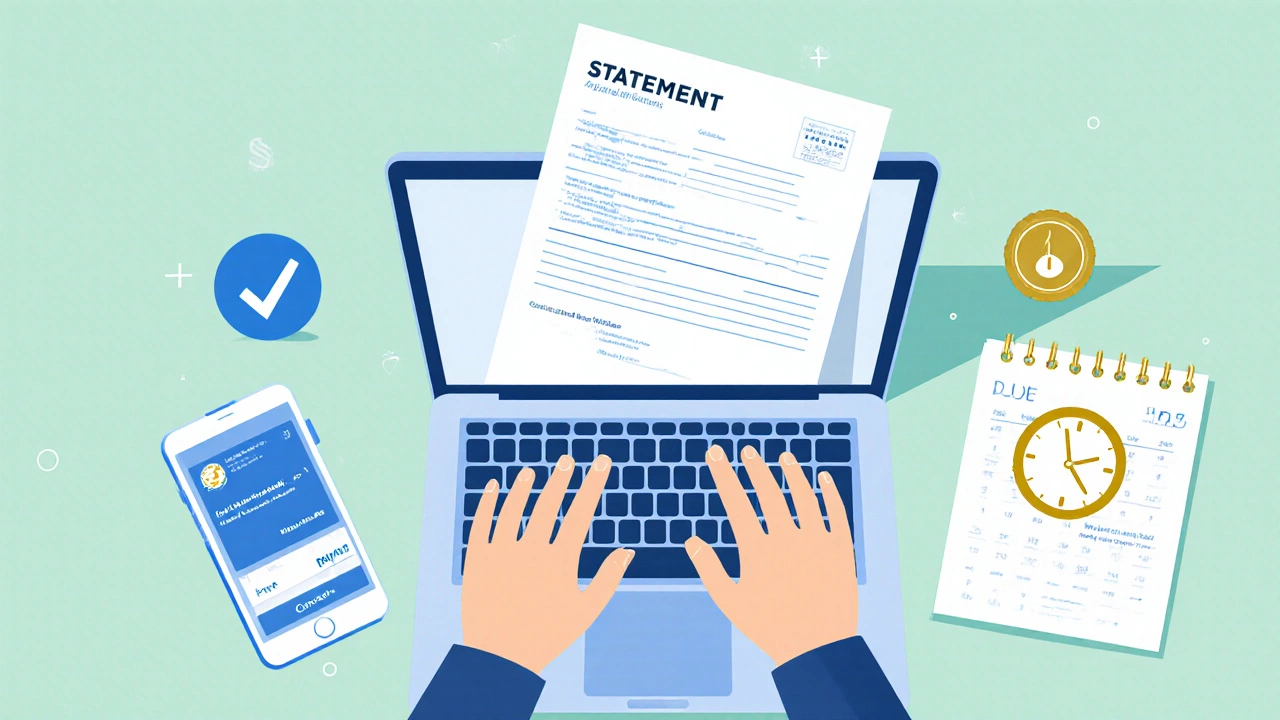The Golden Rule of Credit Cards Explained
 Oct, 12 2025
Oct, 12 2025
Credit Card Interest Calculator
See the Impact of Your Credit Card Usage
The golden rule: Pay your full statement balance every month to avoid interest. This tool shows how much you could save by following the golden rule.
Your Utilization Ratio
Below 30% is ideal for your credit score
Paying Minimum
Minimum Payment:
Interest for Month:
Total to Pay:
Monthly Cost:
Paying Full Balance
Interest for Month: $0.00
Total to Pay:
Monthly Cost: $0.00
Ever wondered why some people seem to glide through life with a credit card while others are constantly battling fees and interest? The secret isn’t a fancy hack - it’s a single, powerful principle that, if followed, keeps you in control and protects your wallet. In this article we unpack that golden rule of credit cards, show how it works in everyday scenarios, and give you a practical checklist to stay debt‑free.
Key Takeaways
- Pay the full statement balance every month to avoid interest.
- Keep utilization below 30% of your credit limit.
- Never miss the payment due date - set up automatic reminders.
- Use rewards wisely; don’t let them drive overspending.
- Monitor your credit score and look for errors.
At its core, the golden rule is simple: Never carry a balance that incurs interest. That sounds obvious, but the devil is in the details - things like grace periods, billing cycles, and minimum payments can subtly push you into paying extra.
What the Golden Rule Actually Means
When you hear “golden rule,” think of the universal “treat others the way you want to be treated.” In credit‑card land, it translates to “treat the lender the way you’d want to be treated” - by paying them back on time, in full, and with as little hassle as possible.
Breaking it down, the rule hinges on three pillars:
- Payment Due Date is the last day you can pay the statement balance without penalty. Miss it, and you’re charged interest on the entire amount.
- Grace Period is the interest‑free window between the end of the billing cycle and the due date. It only applies if you pay the full balance.
- Annual Percentage Rate (APR) is the cost of borrowing expressed as a yearly rate. It’s what you’d pay if you ever carried a balance.
If any of these pieces break, you end up paying interest - the exact opposite of the golden rule.

How to Live the Rule Every Month
Here’s a step‑by‑step routine that turns the rule into habit:
- Log in to your Credit Card account as soon as the statement is generated.
- Check the Statement Balance - that’s the amount you must pay to keep the grace period intact.
- Set up an automatic transfer that matches the statement balance on the Payment Due Date. If you can’t automate, schedule a calendar reminder a day before.
- Pay using a checking account that clears instantly - avoid “same‑day” credit card payments that sometimes incur fees.
- After payment, verify that the New Balance reads $0. If you see a residual amount, call the issuer to confirm.
By the time the next billing cycle starts, you’ve already met the rule for the previous month.
Common Pitfalls That Break the Rule
Even diligent cardholders slip up. Spot the red flags before they cost you:
- Only paying the minimum: The Minimum Payment is usually 2‑3% of the balance. Paying it keeps the account in good standing but instantly triggers interest on the remaining amount.
- Late payments: A missed due date adds a late‑fee (often $35) and spikes the APR to a penalty rate, which can be double the original rate.
- High utilization: Using more than 30% of your Credit Limit signals risk to lenders and can lower your Credit Score.
- Chasing rewards: Some people buy items they don’t need just to earn points, then forget to pay the balance in full.
Each of those behaviors erodes the benefit of a Rewards Program. The key is to let rewards be a bonus, not a driver.

Pro Tips to Strengthen the Golden Rule
- Zero‑balance alerts: Most banks let you set an email or push notification when your balance hits $0. That’s a quick win for staying on track.
- Multiple cards, single payment: Use a budgeting app that aggregates all statements and lets you pay them together on one day.
- Seasonal budgeting: If you know a big purchase is coming (e.g., holiday gifts), temporarily increase your payment amount to keep the balance at $0 after the spend.
- Annual review: Once a year, check the APR on each card. If a competitor offers a lower rate, consider a balance‑transfer offer - but only if you can still pay it off immediately.
Quick Checklist - Live the Rule Every Month
- Confirm statement balance the day it’s posted.
- Schedule or automate a payment equal to that balance.
- Set an alert for the payment due date.
- Keep credit utilization below 30%.
- Review rewards earned and ensure you didn’t overspend.
- Check your credit score quarterly for errors.
| Do | Don’t |
|---|---|
| Pay the full statement balance each month | Only pay the minimum amount |
| Set up automatic payment reminders | Rely on memory for due dates |
| Keep utilization under 30% | Max out the credit limit |
| Use rewards as a bonus | Spend to earn points |
Frequently Asked Questions
What exactly is the "golden rule" of credit cards?
It means never carrying a balance that accrues interest - pay the full statement amount by the due date each month.
If I pay the full balance, why do I still see a small amount on my statement?
Small residuals often come from pending transactions that posted after the statement closed. They’ll appear on the next cycle and can be paid then.
Does the golden rule apply to balance‑transfer cards?
Yes. Even though balance‑transfer cards often have a 0% introductory APR, you still need to pay the transferred amount in full before the promo ends to avoid interest.
How does credit utilization affect my credit score?
Utilization is the ratio of your total balances to total credit limits. Scores drop sharply when utilization exceeds about 30%; keeping it low signals responsible credit use.
Can I set up automatic payments for multiple cards at once?
Many banking apps let you schedule a single “total credit‑card payment” that pulls the combined statement balances from each issuer and pays them together.
